Abigail Clayton, the actor who played waif-like ingénue characters in a brief series of 1970s adult films, passed a short time ago.
Her presence – an affecting blend of a blonde Isabelle Adjani and a hippy Tuesday Weld – illuminated several high-profile San Francisco adult movies – and her acting career was punctuated by striking and surprising starring appearances in two mainstream cult films, Bye Bye Monkey (1978) starring Gérard Depardieu and Marcello Mastroianni, and Maniac (1981).
The Rialto Report spoke to her on a few occasions over the last two decades, hoping to gently persuade her to do a podcast interview. This is what happened.
———————————————————————————————————————————————————————
It started with Jamie Gillis. Doesn’t almost everything start with Gillis? Back when he was still around, I leafed through one of his lovingly-compiled, defiantly old-fashioned homemade scrapbooks. In amongst images of prostitutes, rent-boys, food, and underwear, I found a series of pictures of someone I recognized. Abigail Clayton. The fondly-remembered California-based star of a small handful of films from many years ago. Someone who, as fans are often wont to say, disappeared completely.
The pictures weren’t from films or from magazines. They were disarmingly candid stills, taken in the 1970s, that seemed to catch Abigail unaware. Polaroids, snaps of Abigail, some with her daughter, some posed, others felt almost stolen. Photos that Jamie had taken himself.
Jamie caught me lingering and was amused by my interest. “Her name is Gail,” he whispered.
What are these pictures, I wondered?
“Ancient history,” he smiled. “We had a thing for a season.”
You still in touch, I asked?
“I called her a while ago. I got her number from (John) Leslie. Married. For ages, now. Much older guy. Stability for her, I guess. I didn’t want to rock her boat. But if you want to know about the Frisco scene around 1976, you should call her.” He handed me his address book, open at the page with her number.
I called Gail and introduced myself. She was polite and we chatted for a short while. She was amused by any interest in her past but politely declined any prospect of an interview.
Over the next few years, various people mentioned her in conversation, from Kay Parker, John Leslie, Sandi Fox, Howard Ziehm, and Bill Lustig, and I’d text her brief snippets of their recollections. Occasionally, I’d call to check in and we’d talk about people I’d spoken to.
Then a few years ago, I interviewed the organizer of an adult film festival in New York from the early 1970s, named Saul. He mentioned dating Gail in the late 1970s, and spoke about her in glowing terms, describing her as the love of his life. As a result, I re-connected Saul and Gail, and in the process, I asked Gail about an interview again. I said that after interviewing so many people who knew her, it would be interesting to hear her side of their memories, not to mention to give her the chance to correct inaccuracies.
She said she was dealing with some serious health issues, but that she would consider a podcast interview sometime in the future – after she recovered. Then she softened: “I suppose if there is anything I can answer for you now, I have a few minutes… if you don’t mind a fleeting conversation.”
*
Let’s put a myth to bed… something I suspect may be inaccurate: the internet insists you were born in 1960.
(laughs) Sadly that isn’t true. I was born long before that.
Do you want to elaborate, or shall we leave it at that?
(laughs) 1948. November 1948.
And you were born in New York?
Yes.
How would you describe your upbringing?
It was normal. A comfortable, professional, middle-class family.
And that was in Huntington, NY?
Yes, on the north shore of Long Island, about 40 miles from Manhattan. I graduated High School there in 1966.
And when you left school, you went to college?
I did. I enrolled in the New York State at Stony Brook, just down the road from Huntington. I know you’re going to ask what I studied. (laughs)
Not if you tell me first.
(laughs) I graduated with a Bachelor of Arts in Fine Art. 1971.
Was that a theoretical or practical course?
Mmm, both. I did the usual creative classes – drawing, painting, photography, a little sculpture, a bit of film work – and then I did criticism, theory, and history courses too.
What did you enjoy most?
I liked all of it. I particularly enjoyed doing photography.
Didn’t you do some modeling as well?
A little… I preferred being behind the camera though (laughs).
Why was that?
Well, for a start because I was a little self-conscious, and I felt awkward. But also, it felt a strict and unforgiving environment, and I was all about feeling free at that stage of my life.
When did you move to California?
1971. Or 1972, I think.
You’d lived a wholly New York-centric life until then, and so I always wondered how you decided to go to the west coast.
It comes back to what I was saying before: the freedoms that we were experiencing for the first time. California was the symbol of that. Especially San Francisco, so I ended up there. Ir seemed that everyone was moving there for a time. It was the center for interesting things.
Did you have any aspirations or desires for what you wanted to do there?
Not really. It was more about… how I wanted to live. That was more important than… what I wanted to achieve.
And how would you describe how you wanted to live?
I wanted to have a casual lifestyle. Not get caught up in corporate, middle-class America too quickly (laughs).
How did you support yourself?
All sorts. Casual temporary jobs. Short-term things mostly at first.
Where did you live?
A few places in San Francisco, then I moved out to Marin County around the time I started working for Alex DeRenzy.
How did you start working for Alex?
I can’t remember if I answered an ad in the Berkeley Barb or if someone recommended me to him. He was looking for an assistant.
Which meant doing what?
Oh, with Alex, it meant doing everything (laughs): a lot of admin tasks – in fact, I was his driver for a time! But then he taught me how to edit, I did some production management, and he had me doing camera work and lighting too.
Can you remember any specific films of his that you worked on – before you started acting?
No idea, I’m afraid. Whatever Alex had going on in 1973, 1974.
Did you enjoy it?
Oh yes. It was a wild, crazy, anarchic group of people who were all rebelling against their own part of the universe. But somehow, this troupe of misfits clung together, and it was quite strange how it all seemed to work perfectly.
You were from a rather different background, so how did you fit in?
I was happy there; the people were kind and friendly. Also, I didn’t expect to be part of that group forever, so I think that helped.
What do you remember about DeRenzy himself?
He was intelligent, well-organized, and disciplined. A man’s man. He had a strong character, and everything that was going on around him… he held together. He was always planning his next caper or escapade, so it was exciting being there. He had a harem of women devoted to him too. I remember his wife, Kathryn, and his girlfriend, Carol. Both were sweet and kind.
Did you know much about him before you worked for him?
Not really. I knew that he made films and that he owned theaters in the city. Was The Screening Room one of his? I think I went there a few times before I met him.
Oh, and he’d been arrested in Canada smuggling marijuana on his ship a few months before. That was Alex…. always doing something wild.
Did you meet other people through him?
Yes, because it was a pretty small group of people who were in his circle. I remember meeting people like Annette (Haven), Sharon… was her name Sharon Thorpe? John (Leslie), Ken (Scudder), John Seeman, Joey something (edit: Silvera). A girl with jet-black hair who was Annette’s girlfriend also stands out.
Could be. That name is vaguely familiar. But I think her real name was different.
What was your reaction to them as a group?
I was in awe of Annette. Everyone was! (laughs) She was like a princess. And she was fiercely opinionated and intelligent too. I never wanted to cross Annette. People were a little afraid of her. But she was supportive and kind to me.
I remember everyone was friendly and welcoming. It was like a hippy commune in some ways.
How did your first film experience as an actor come about?
I’m hazy. You’re really testing my memory. It’s such a long time ago. I think I may have been between jobs editing for Alex, and I was looking for some money. When that happened, I often got editing jobs at other film companies. Who knows?
I wondered if it was perhaps a loop with Jerry Abrams?
Jerry Abrams… I haven’t thought of that name for a long, long time. (sighs) He was a strange man (laughs). What happened to him?
He passed away a few years ago. He was still in San Francisco.
It’s possible (that he was the first). He made a lot of the short films, so he was always looking for people for them. He was definitely one of the first I worked with.
Ken Scudder remembers meeting you around that time in Mill Valley – when you did a loop together for Jerry. He said you were working as an editor at Parker Labs at the time.
Oh Ken. (sighs). It’s possible.
Ken spoke highly of you. You went on to have a relationship with him for a couple of years.
He was a sweet, gentle man. A little neuro-divergent.
Meaning…?
Meaning that he didn’t socialize well with others. We did see each other on and off for a while. He was intelligent and curious… and cultural. We went to see European films together. That was fun.
Ken said that he didn’t socialize well with fellow actors and film people in this business was that he didn’t feel comfortable being around most of them. He said you were an exception.
I think that Ken was just socially awkward. He was a lost soul, trying to find his way. He made hundreds of these films – many, many more than I ever did – but he felt shame and guilt for not doing more with his life. It was a disappointment for him.
Do you remember a cult film that Ken starred in, Thundercrack! (1975)?
Yes, of course! (laughs) I got to know Curt (McDowell) and George (Kuchar) through Ken as they were all preparing to make the film. When I told George that I had some camera experience, he said, “Motion picture cameras or still?”
I said, “Both!” and then I told I had a degree in Fine Art – and that I had worked with DeRenzy.
He said, “Welcome to Thundercrack, darling!”
After that, I worked closely with George as his gaffer… and general assistant.
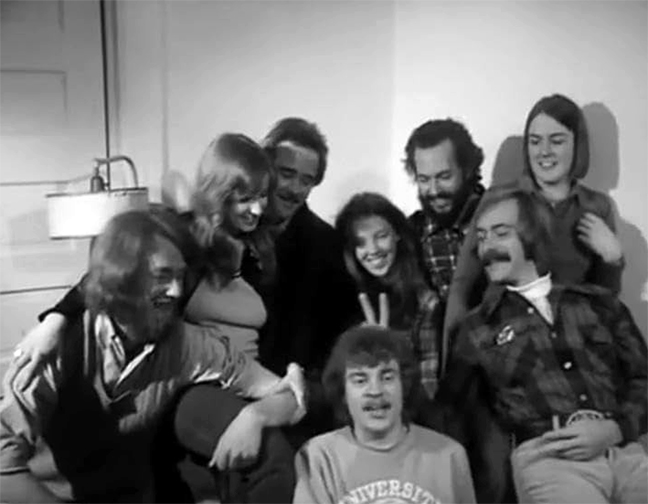 Mark Ellinger, Curt McDowell, Melinda McDowell, Rick Johnson, Margo O’Connor – and Abigail Clayton (center) in ‘Thundercrack!’
Mark Ellinger, Curt McDowell, Melinda McDowell, Rick Johnson, Margo O’Connor – and Abigail Clayton (center) in ‘Thundercrack!’
And you took photographs on set as well?
Yes, that was enjoyable. The film was shot in black and white, like an old German expressionist horror film, so the lighting was dramatic. That was perfect for photographs. I was pleased with the pictures too.
Have you seen ‘Thundercrack!’ since it came out?
I saw it at the time of course. There was a showing in New York a few years ago. I was happy to see it again. It brought back memories, and it was good to see Ken onscreen too.
You had another boyfriend around this time. A number of people have mentioned him to me – and their stories about him don’t paint him in a favorable light.
Ok…
Can I ask you about him?
(laughs) What do you want to know?
What was his background? I’ve heard different accounts – he was a student, nurse, cab driver, occasional adult film actor… drug abuser.
Hmmm… yes.
And that he treated you badly.
(pause) We had a volatile relationship. Let’s just say that.
Some were worried about your safety.
It wasn’t… a smooth affair. But I was young and didn’t know better, and so it went.
And the relationship lasted a while. A few years?
Mmm (edit, affirmative).
Let’s switch gears. How do remember deciding to act in your first adult feature film?
I don’t remember that it was a decision specifically. More like just another adventure at the time. It was Alex who asked me.
Was that for Femmes De Sade (1976)?
Yes.
What was the pitch to you?
Alex told everyone he wanted to make the biggest, most outrageous film that had ever been made. So it was important to him that everyone he knew was involved. And that meant everyone on the San Francisco scene: Annette (Haven), Linda Wong, Desiree something, Sharon, John Leslie, John Seeman, Johnnie Keyes, Bob (Turk Lyon), Lesllie Bovee, and many more I can’t remember.
We shot it in the summer (edit: 1975) and I was production manager as well, and then in the fall, I worked on the edit with Alex.
Your scene was with Joey Silvera?
Yes – and I’ve just remembered: we went to San Quentin to shoot by the entrance to the prison. Alex knew some of the guards, so he arranged for a quick set up there. Unauthorized, of course (laughs). With Alex, you were never more than five minutes away from getting arrested.
I see that ‘Femmes de Sade’ had its worldwide premiere at the Presidio in San Francisco on Friday Feb 27th, 1976. Did you ever go to screenings of your films?
I did. Quite a lot, actually. I was shy but I liked meeting people, and so I went to a few. I remember the premiere party for that film. That was… as extravagant as the film itself!
Do you remember where the name ‘Abigail Clayton’ came from?
(laughs) My real name is Gail, so I changed it slightly. Maybe I was inspired by Abbie Hoffman who was a famous social activist of the 60s.
I always wondered if it was the lady behind the ‘Dear Abby’ newspaper advice column?
(laughs) That would’ve been a better inspiration!
I can’t really remember where the ‘Clayton’ part came from. Perhaps it was Adam Clayton Powell, who was a Democratic politician in New York at the time. He was a strong supporter of civil rights who I admired.
I’m getting a sense that social issues were important to you.
How could they not be? I lived through a turbulent period, and you couldn’t help but be affected. We wanted to change the world.
I know this was meant to be a quick conversation. Are you good to keep going?
I fear I’m not giving you what you’re looking for (laughs).
Not at all. It’s good to hear your memories, whatever they are.
Having appeared in some loops – and then in DeRenzy’s ‘Femme De Sade’, did you think about making more films?
Not really. It was never a ‘career’. It was just something I did from time to time.
What were the main reasons for making further films?
It was a convenient way of making money, I was with friends, it was fun, occasionally exciting, good for my ego… all the usual reasons. I don’t want to create the impression that I was manipulated, or even aimless. Rather it was all something of its time. I didn’t act often. Nothing like Annette for example, who made a real career from these films. I probably made less than ten, right?
Fifteen, over a five-year period. You’re right: that’s much less than many others at the time. One of the first you made was Dixie (1976). That came out in February 1976.
I do remember that…
You don’t sound enamored with the memory.
It was the first – and only – time when I worked with people that I didn’t know. Alex recommended me to a Los Angeles filmmaker (edit: Rick Beaty) who would come up to San Francisco to make his films. I heard that was because it was still illegal in Los Angeles. So I went ahead and agreed to be in it… and I regretted it.
What went wrong?
Nothing went wrong. Everyone was fine, and professional. But the story, if I recall, was… well, irresponsible.
You portrayed an underaged prostitute.
It wasn’t just that. It was told with a leering perspective. Someone like DeRenzy understood women even if he was making films mainly for a male audience. But this film was different. I didn’t realize it until we started making it. It taught me a lesson.
After that, I worked sparingly. I only did films when there was something that interested me.
What are examples of films that you decided to do because they had some interest?
When it was a filmmaker who had talent, or someone with something interesting to say. Or if it was working with women that I knew and trusted. I assessed the quality of the films that were offered to me on the basis of the how good the cast was and how much the cost was!
Was that the case with A Coming of Angels (1977) which featured friends like Annette (Haven) and Lesllie (Bovee)?
Is that the film that was shot in the snow?
Yes – a take-off of ‘Charlie’s Angels’.
Sort of. I remember that we thought it sounded fun. I remember it didn’t turn out very female-friendly but it was good to work with people I knew, and we had a good time.
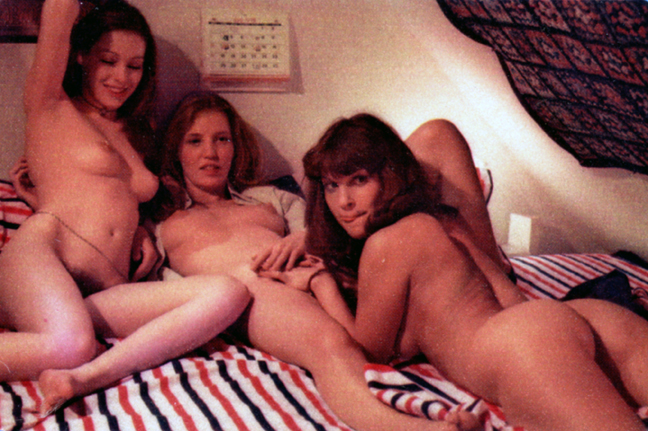 ‘A Coming of Angels’ (1977), (l-r) Annette Haven, Abigail Clayton, Lesllie Bovee
‘A Coming of Angels’ (1977), (l-r) Annette Haven, Abigail Clayton, Lesllie Bovee
A number of your early films also featured Ken (Scudder). He says that was awkward for him because of your on/off relationship: was it uncomfortable for you?
(laughs) Was he uncomfortable because we were “on/off”?
No, I think it was because he was embarrassed to be intimate with someone else in front of you – when he just wanted to be with you.
(pause) Well, that was something you had to deal with, I suppose. It was difficult for some people.
He said your relationship was like the film ‘La La Land’, in that you outgrew him and became a star, and he was left behind.
(laughs) Oh, I don’t know if we were that serious. And I don’t know that I was ever a star (laughs). We drifted apart, and I saw less of him. I always wondered what happened to him. Sweet man.
After the first few films, you became pregnant, I understand. What was your experience of being a single mother?
That was in early 1976. I gave birth to my daughter in November 1976 in Marin County. I wasn’t strictly single though: I had my boyfriend.
Was having a child a challenge in terms of your lifestlye?
Having a family always changes things (laughs).
But you have to understand, I didn’t make many films. It wasn’t a full-time job, just a few days in any year – so it was only a small part of my life. I was able to be with my daughter a lot: we were inseparable. I took her everywhere.
In July 1977, pictures of you appeared in Playboy magazine in a feature about the new wave of female performers in adult films.
I remember that (laughs).
Howard Ziehm, who directed you in Hot Cookies (1977), said that the publication of the Playboy article was the moment you felt you had to come clean to your parents about your life on the west coast – and that you were apprehensive about the conversation.
It could have been then, I can’t remember. But yes, I was worried (laughs).
Howard said that when you called them, their reaction was actually one of relief because they thought you were going to reveal that you had joined the SLA (the group who kidnapped Patty Hearst).
(laughs) Well, I don’t know if they were relieved to hear what I had to say… but they were probably happy that I wasn’t in trouble with the law. And they were broadly supportive, you could say.
John Leslie was a friend, I understand?
I was close to John for years. I knew him since the days with DeRenzy. Not romantically, he was like a big brother. He always had my best interests at heart. He was from New York like I was, and he thought that I should go back to New York. He was a real actor, and he said I should try and be an actor there, away from the distractions of the films we were making in San Francisco. He was right, of course, and so I did move back east.
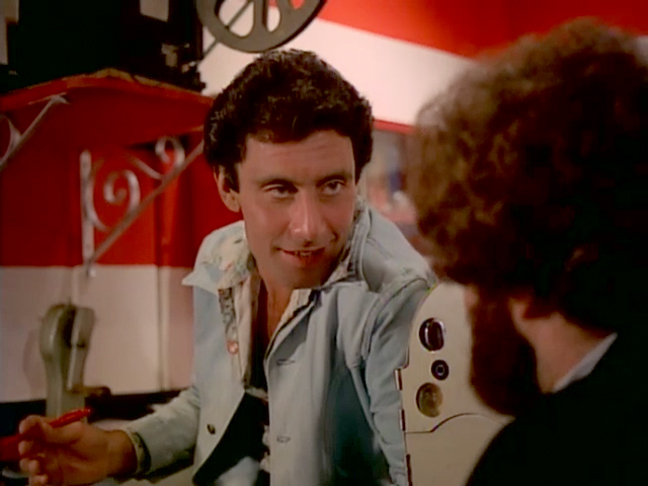 John Leslie in ‘Femmes de Sade’ (1976)
John Leslie in ‘Femmes de Sade’ (1976)
I understand that the last film you made before you left was SexWorld (1978)?
That was for Sam (edit: Weston, aka Anthony Spinelli). He was always pestering me make a film with him but nothing he offered was interesting. Then he said he was going to make his big film – just like Alex had done with his ‘Femmes’ film (edit: ‘Femmes de Sade’) – and he wanted everyone in San Francisco to take part. And he got everyone onboard: Annette (Haven), Kay (Parker), John (Leslie), Lesllie (Bovee) and many others. So I said yes.
Do you remember much about it?
Not really. But I remember there was a big wrap party – which was nice to say goodbye to everyone before I left.
After you moved back to New York, you were cast in a big budget Italian arthouse film, Bye Bye Monkey (1978) (aka ‘Ciao Maschio’), directed by Marco Ferreri. That was an impressive job: how did get that part?
That was John (Leslie). He was contacted by a New York agent called Sandi (edit: Sandi Foxx), and they connected me to them.
Do you know if they were specifically looking for an actor who’d had experience in adult films?
I was told they were looking for someone who could act, and who was comfortable taking their clothes off… because there was a lot of that in the movie (laughs). So that’s why they came to Sandi, I think. I’m not sure if they knew of me or not. Maybe they did.
Sandi was supportive and accompanied me to set each day. She also took care of my daughter when I was working on the film.
What do you remember about working on ‘Bye, Bye Monkey’?
Well, it was completely different from any of my previous film work (laughs).
How so?
It was a big, serious film. An French-Italian co-production, so there were lots of investors who were around, and that created some conflicts with Marco (Ferreri). It took months to make, and the crew of Italians who came to New York was huge. I’d never been part of anything like that.
And the two male stars were impressive: Marcello Mastroianni and Gerard Depardieu. I remember the Italian poster: it featured the two of them looking down on you in the center. Not many actresses have appeared with two of the greatest European film actors of all time…
(laughs) It was daunting being around them. I had a lot of scenes with Gerard, so I spent a few months getting to know him.
What was he like?
Very French! (laughs) He was a man of appetites… food, wine, sex, and other experiences. A little bit crazy. I learned a lot from him about acting. He was serious about it. He’d make suggestions to me to do things differently. He’d say things like, “Your mother is having sex in the room next door with her lover, and you are left alone with your wretch of a father. Now…. be that person!”
Sometimes he pushed buttons or taunted me, even cruelly… other times he was playful – but it was to get me to react to him in a more authentic way. It was exhausting. He was intense. It wasn’t always happy, but I learned a lot.
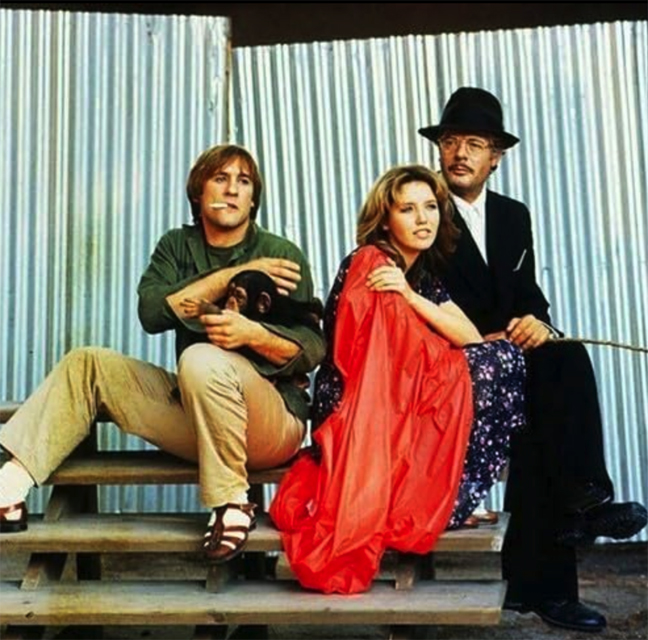 Gerard Depardieu, Abigail Clayton (aka Gail Lawrence), and Marcello Mastroianni – on the set of ‘Bye Bye Monkey’ (1978)
Gerard Depardieu, Abigail Clayton (aka Gail Lawrence), and Marcello Mastroianni – on the set of ‘Bye Bye Monkey’ (1978)
The scenes that you share with him seem very natural: were any parts improvised?
I don’t remember that, but we rehearsed a lot of different ways of doing a scene in advance, and I never knew what version was going to play out… which kept it more spontaneous, I think. It was like a rollercoaster.
Do you remember much about the director, Marco Ferreri?
A madman. Very intense, but at the same time very creative. He was provocative too, and looked for ways to be shocking.
One aspect that I love about the film are all scenes shot in Lower Manhattan and Tribeca before it was gentrified, and when the Twin Towers were still there.
We shot those scenes very early in the morning before people were out and about, and that adds to the empty feeling of the film.
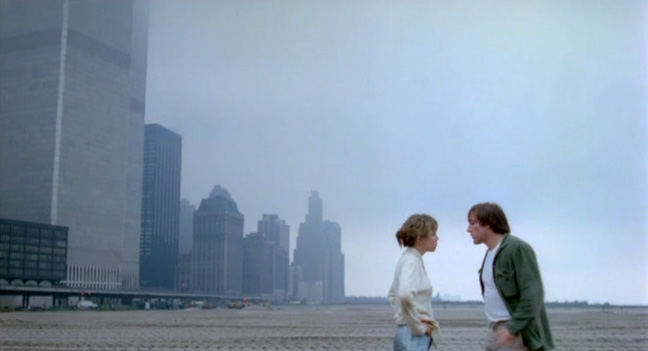 With Gerard Depardieu, ‘Bye Bye Monkey’ (1978)
With Gerard Depardieu, ‘Bye Bye Monkey’ (1978)
The film was shown at Cannes, and received a wide release and a degree of critical acclaim – so, was that a turning point in your adult film career? After all, nobody had managed to make the crossover from adult films to mainstream before that.
I was sort of finished with adult films by that stage anyway. I was living in New York, and I had my sights set on a new life. What that film did was it showed me what a regular film experience would be like.
And you liked it?
Yes. Maybe it was less fun in the moment, because it involved more people, more money, and it was more serious, but I liked it.
And what was it like to play with a small monkey?
(laughs) That monkey was so funny – and difficult!
How much of a disappointment was it that nothing came out of that film experience – because this was a major film and I’m guessing you thought it would be a turning point that might lead to more film work?
(Sighs) It was a big disappointment. I expected to be offered other similar roles, but… nothing.
Why do you think nothing happened?
(Pauses) Because of the type of films I’d already made… maybe. The stigma of those. I understand that now. I didn’t understand then.
After that, you did return to California for a couple more adult films, The Health Spa (1978) and Cave Women (1979) – both directed by friends of yours, Emily Smith (aka Clair Dia) and Annette Haven.
I was persuaded that women making a film might be different. It was a new concept, and I supported that. But I just flew in for those and then came straight back to New York if I remember correctly. It’s all a long time ago.
What did you think of the resulting films?
I don’t know if I ever saw Annette’s film, but ‘Health Spa’ was fine. It wasn’t the female breakthrough – artistically or commercially – that we hoped for, but it was a start.
You made some personal appearances for ‘Health Spa’. Was that done through the producers Cass Paley (edit: ‘Wesley Emerson’) and Bill Ward?
Yes. I wanted to help Cass and Bill make the film a success.
Speaking of ‘The Health Spa’, Kay Parker mentioned that she got to know you when making this film – it was one of her first – and that she was forever grateful to you for being considerate with her – especially the physical scenes.
Kay was unusual: she was like a prim English governess from ‘My Fair Lady’ or ‘The Sound of Music.’ It was as if she had ended up on these film sets by accident (laughs).
I couldn’t ever find any interviews that you gave in the 1970s. Do you recall giving any?
I gave brief details to some journalists, like for the Playboy magazine, but nothing more than that.
Was that intentional?
I never wanted publicity, or to be considered a star, or anything like that.
When you moved back to New York, you cut most of your ties to the business… but you became friends with Jamie Gillis who was about to move in the other direction and relocate to California?
Oh Jamie. Is he still around? I lived with him for a while (laughs).
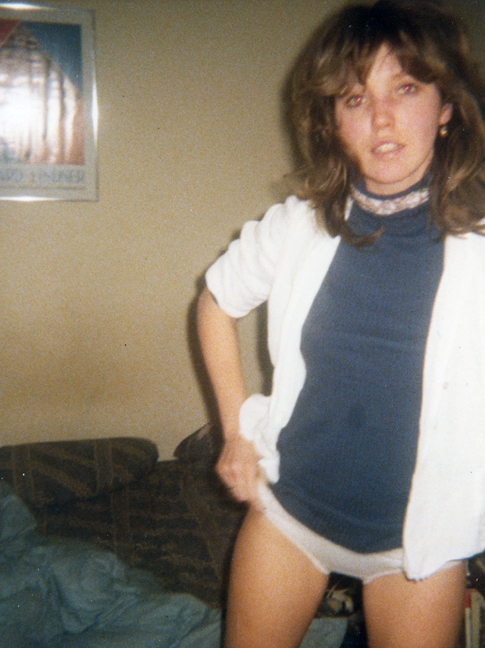 From the collection of Jamie Gillis
From the collection of Jamie Gillis
Do you want to elaborate?
(laughs) Jamie was very physical so most things revolved around that. He was a little like Gerard (edit: Depardieu) in that respect. We lived in the Times Square area, so he took me around his favorite places…
The peep shows, adult theaters, and so on?
You know Jamie… (laughs)
He was actually very caring too. He was good with my daughter and we did things together for a time. And being the actor that he was, he was good at encouraging me and helping me to make it as an actor.
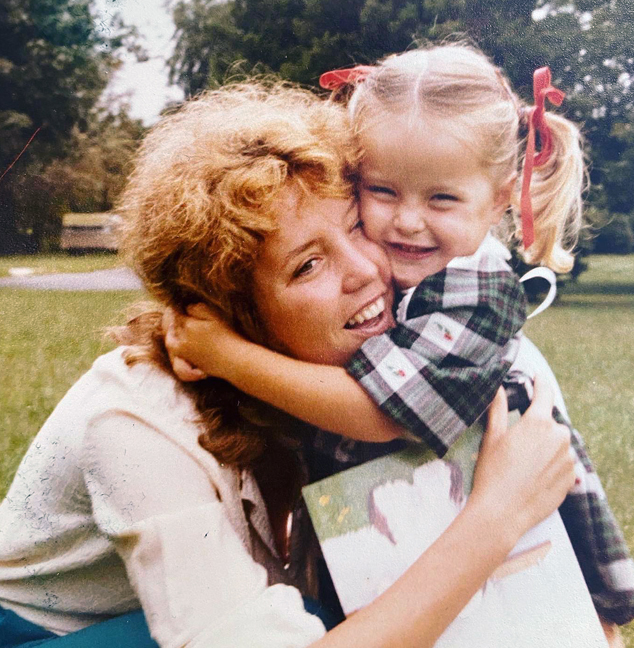 From the collection of Jamie Gillis
From the collection of Jamie Gillis
Did you find it difficult to find acting work in New York?
Yes, I did auditions but nothing materialized. It was difficult for an outsider to break in.
In the late 1970s, you started dating Saul – who I interviewed without having any idea that you and he had a connection. I just knew he had organized a film festival in New York in 1971 that I was curious about.
Oh, Saul. I’m so pleased you put us back in touch.
Can you tell me a little about your relationship?
I first met him when I returned to New York. I was doing a signing in the lobby of a theater. He recognized me from ‘Dixie’, which he had seen a few years earlier. He asked me out but I was still getting over the relationship with the father of my daughter, so I turned him down. A while later, after Jamie, I was walking past Tiffany’s on Fifth Avenue, and we bumped into each other. He didn’t have much money so he took me to the Blarney Stone pub (laughs).
Where were you living at this time?
I moved back in with my folks on Long Island.
So you started seeing each other?
Yes. He was caring and funny. And he was normal after Jamie (laughs).
How did your daughter react to you having a relationship?
At first she was too young. Later, she announced on day that she didn’t like him, but the next day she told him she would love him if he took care of her (laughs).
During that time, Bill Lustig cast you in Maniac (1980).
Yes. That was a fun experience. I mean it’s a horrific, violent film, but the experience was good.
How did it compare to the previous films you’d made?
It was low budget – which I was used to: in fact, I was in the very first scene that Bill shot for the film, and I remember thinking, “I don’t know whether they’re going to have enough money to bring this to a conclusion.” But they did – and the film was a big success. I was surprised!
I wonder what you think about that fact that a number of the films you appeared in have themes that, with hindsight, are perhaps not ones you are entirely comfortable with today.
True, but those were the only options that we had then. This was the 1970s. It wasn’t always a great time for women. I think, I hope, it is better today, but I’m not sure.
Your only other film part was a very short part in a Ryan O’Neal film, So Fine (1981).
Yes, that was funny. I was a nun!
But I should correct you. I was in several other films made in New York. Many, in fact. But they were tiny roles, and you just see me in the background.
Saul said that playing a nun was a perfect part for you because you were such a good person.
At least he didn’t think I was like a nun (laughs).
Saul said that you split up with him when you started seeing the CEO of a big company – and moved in with him in a suite at the Carlyle hotel.
Well, we’d grown apart by then.
Was it at that point that you decided that your future was away from films?
Yes. I got into this new relationship and enrolled at the Stern School of Business in New York. I graduated with an MBA in Marketing in 1985.
After that, you became a regular 9-5 worker?
Eventually, yes (laughs). I joined the regular workforce. I got married later… and here I am (laughs)
*
Over the years, Gail and I swapped photographs, usually via text:I sent pictures of old friends of Gail’s that I met up with, she sent back the occasional picture of herself.
Gail sometimes asked what happened to people we spoke about. One was Ken Scudder. I told her that when I spoke to him, Ken said that the last time he saw Gail was when she made a personal appearance at the Market Street Cinema in San Francisco to promote a film. There was a bigger-than-full-size cut-out of her in the theater lobby of the theater – he took it, and she wrote an inscription on it for him. He kept that picture and still had it in the garage when I spoke to him almost 50 years later. I told her that Ken died when he suffered traumatic brain injury after a fall down the stairs at his home in 2018.
Gail was quiet at hearing the news. “It’s the unexpected passing of people that hits you the worst. You feel cheated.”
A short while later, I learned of Gail’s passing.
*
‘Bye Bye Monkey’ – A Gallery
*
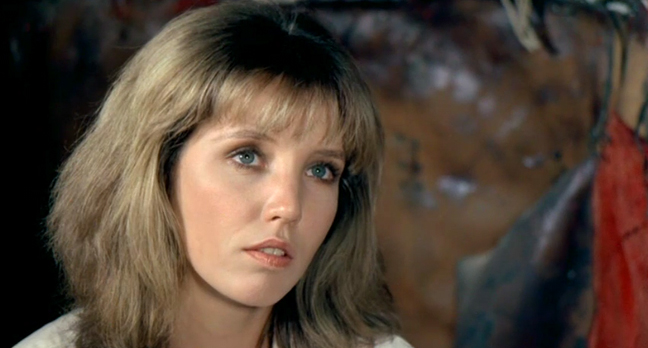
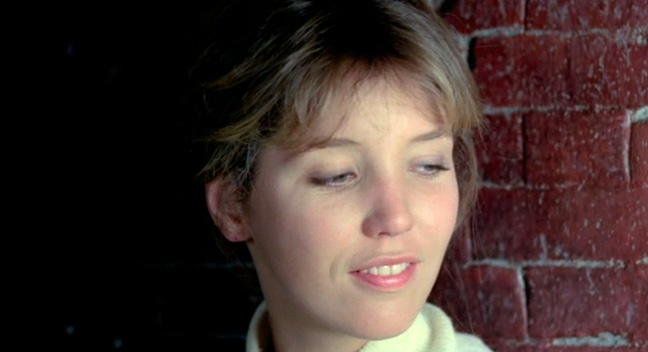
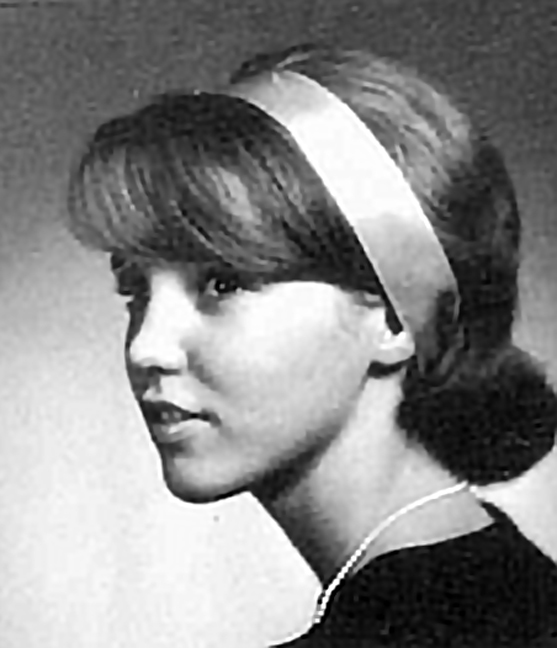

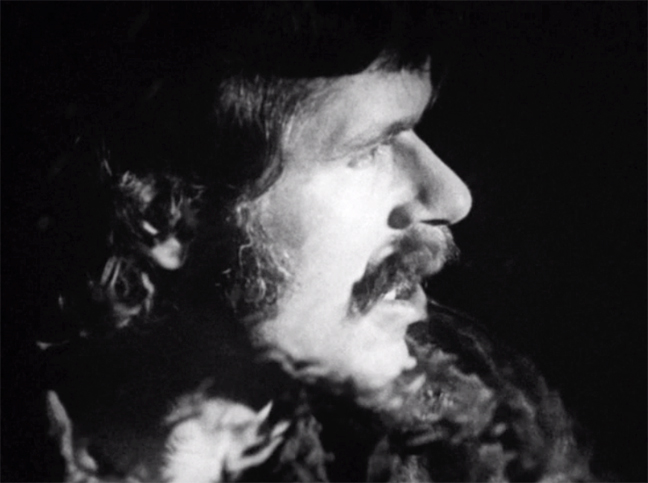
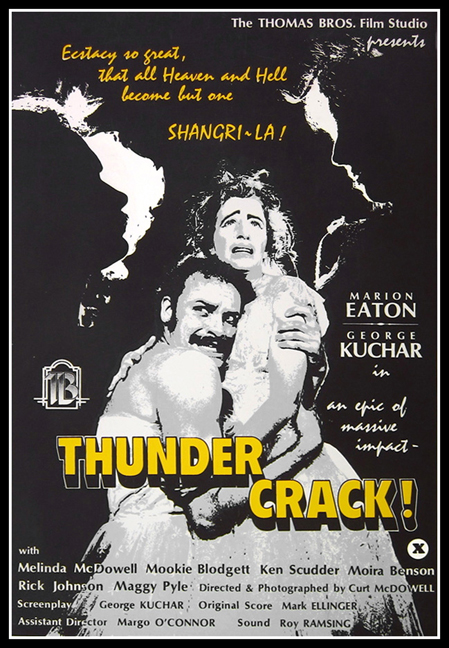
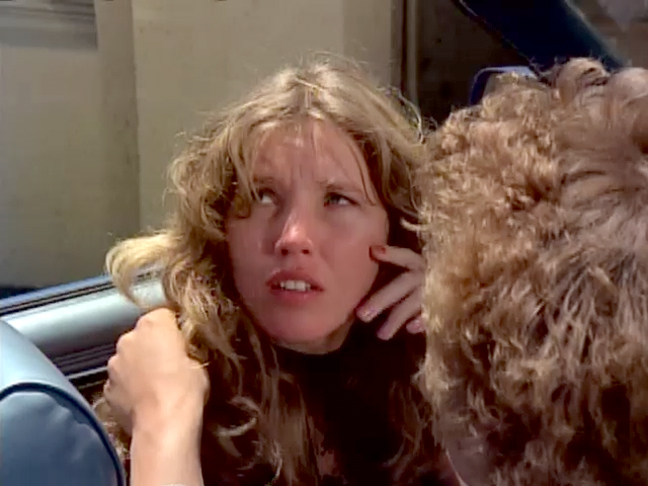
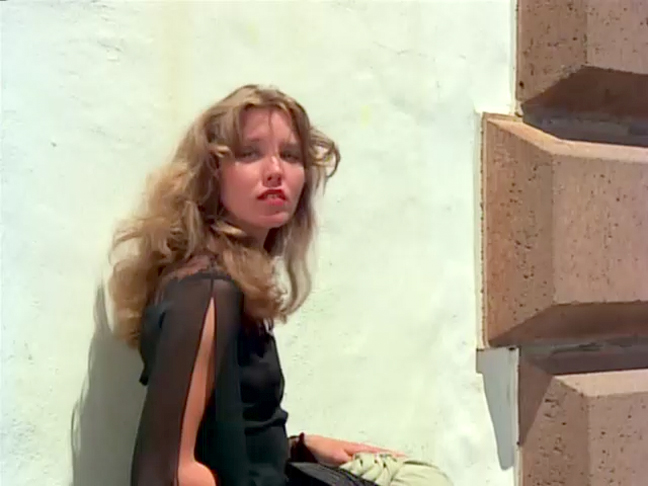
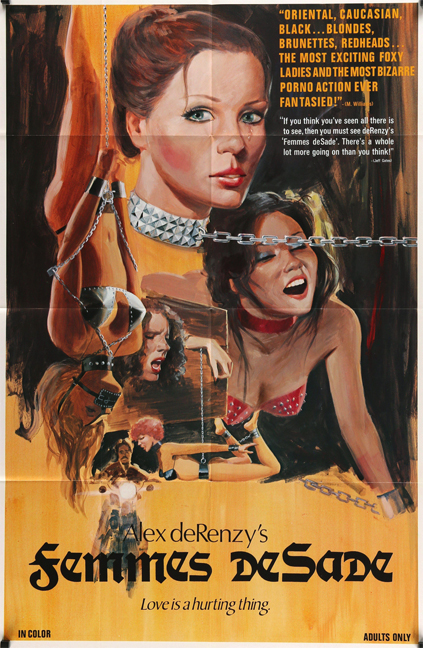
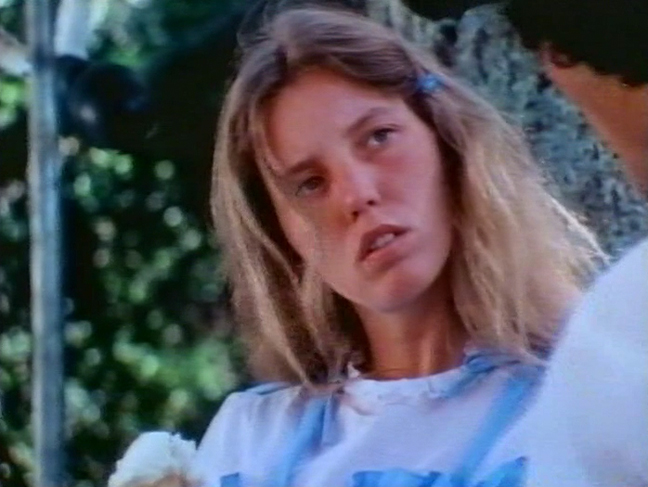
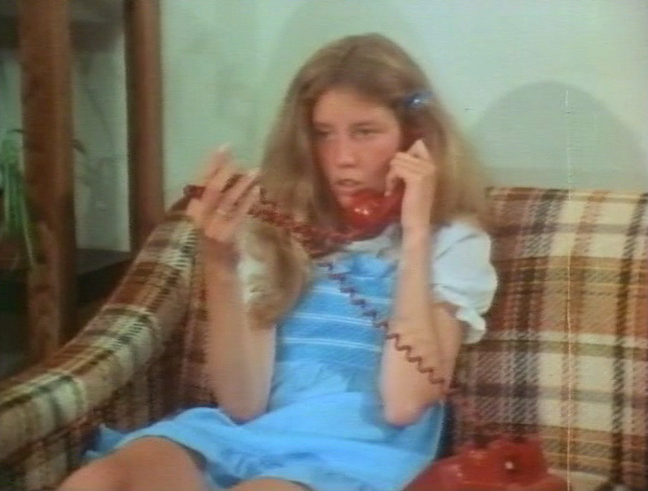
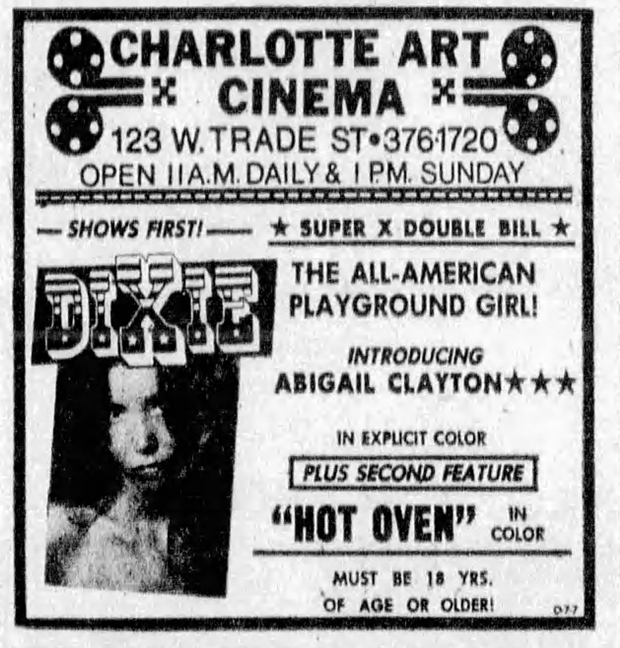
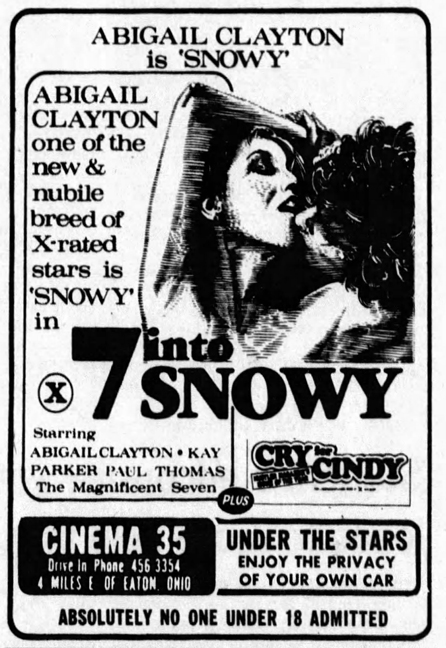
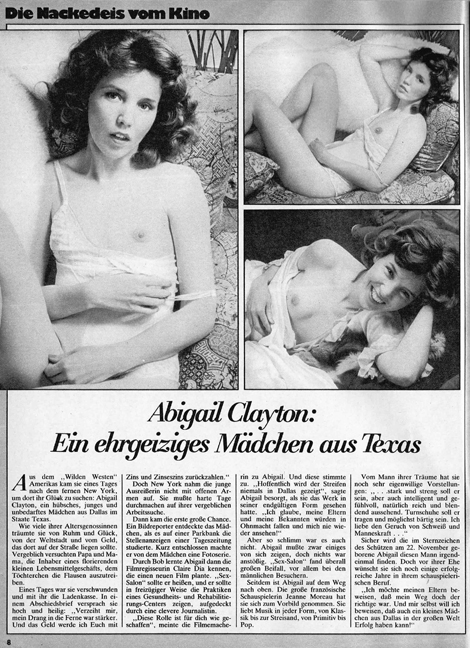
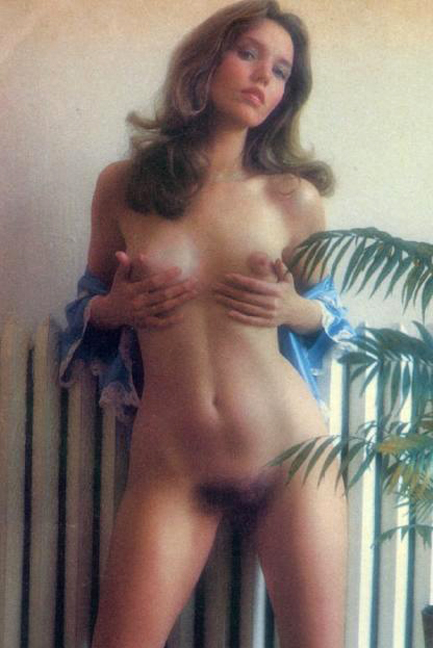
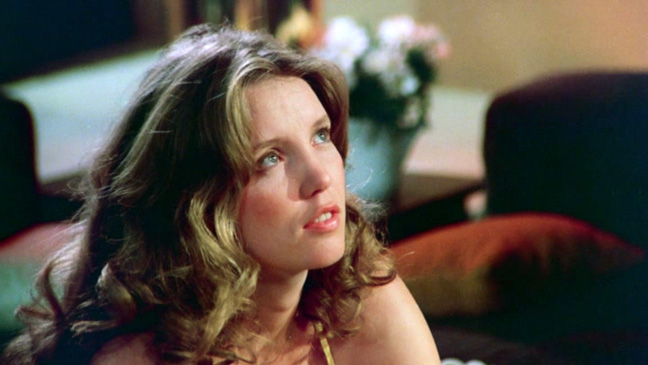
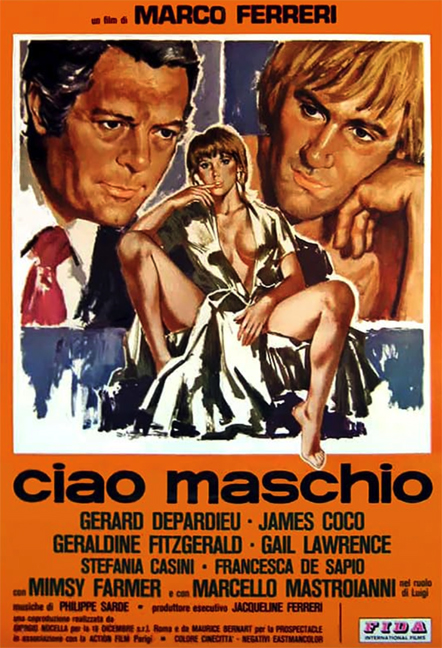
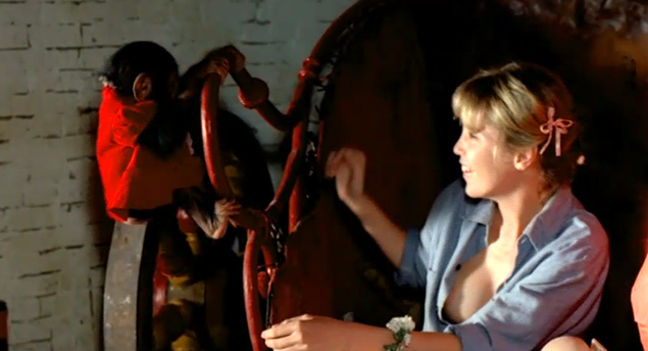
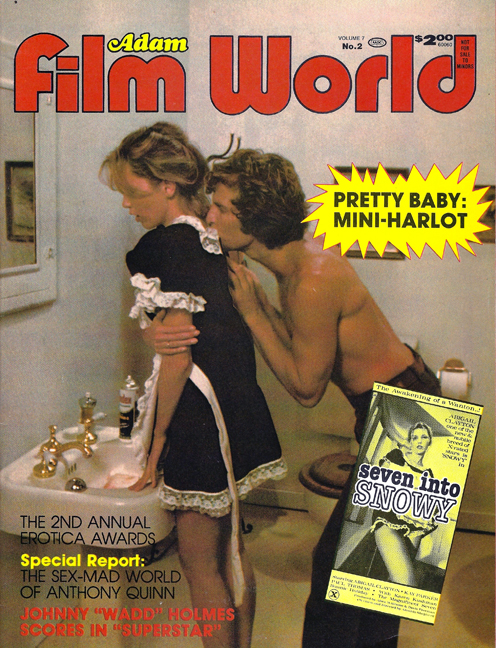
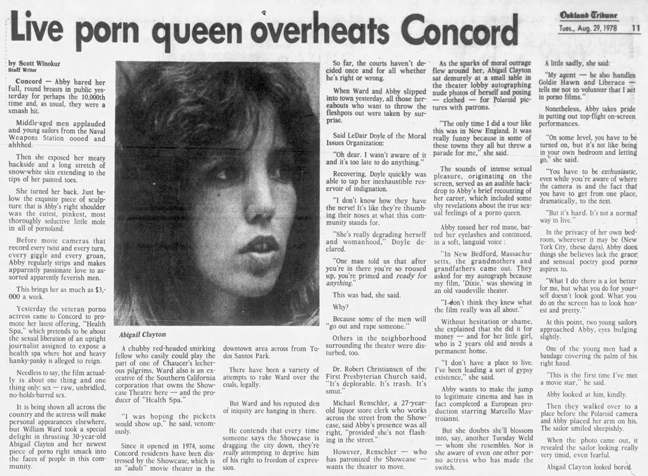
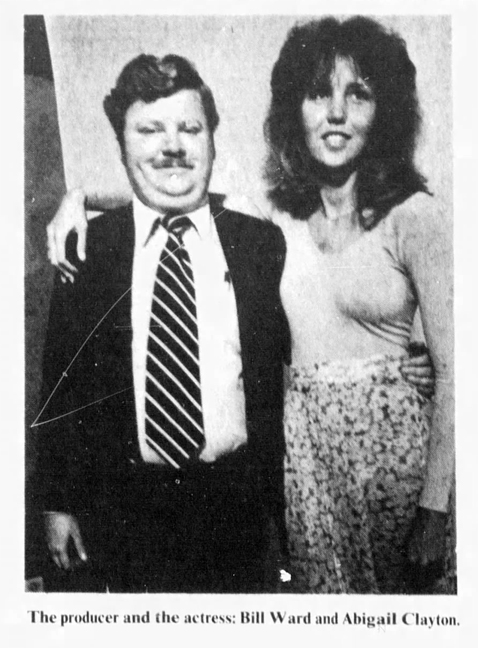
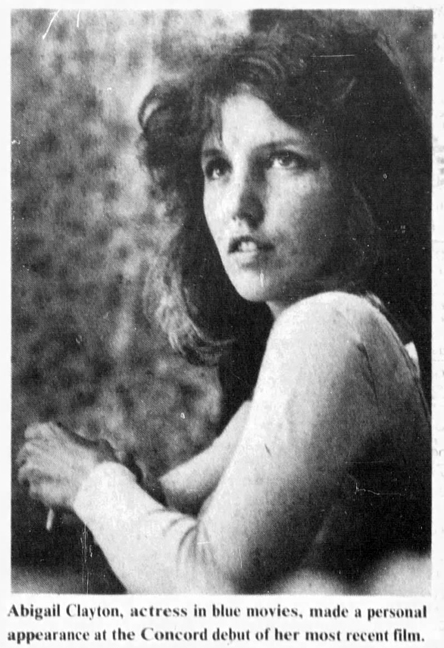
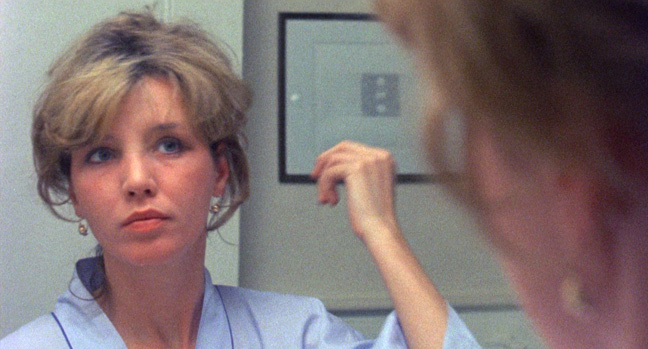
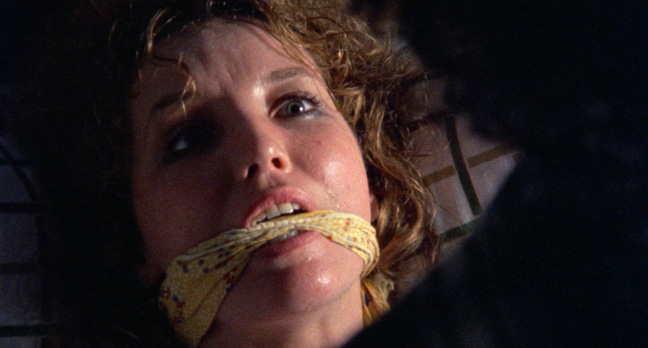
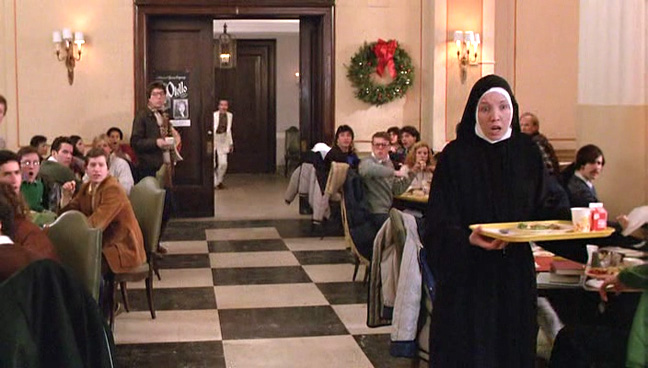
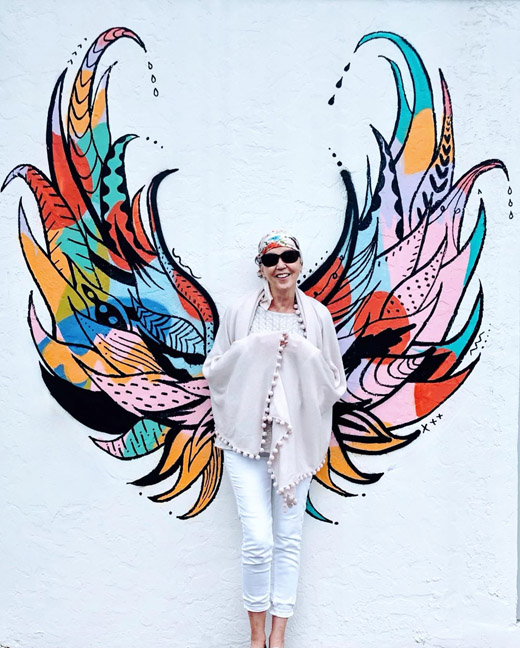
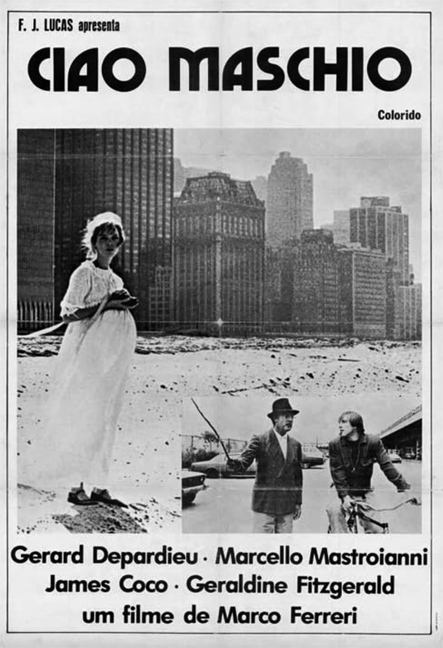
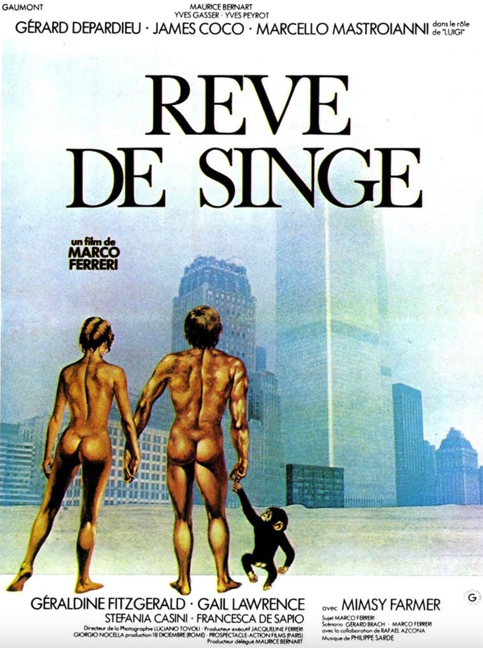
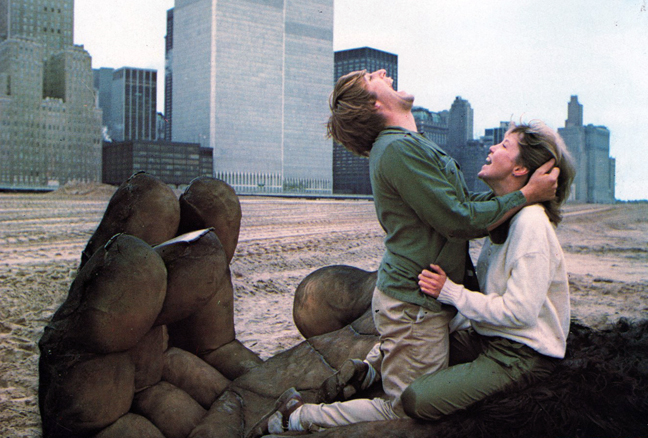
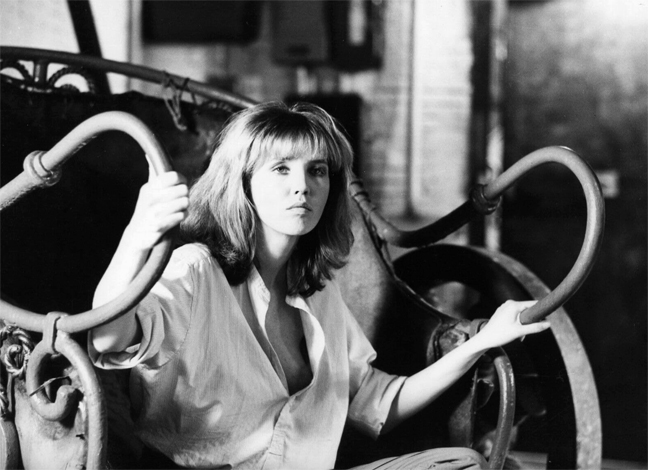
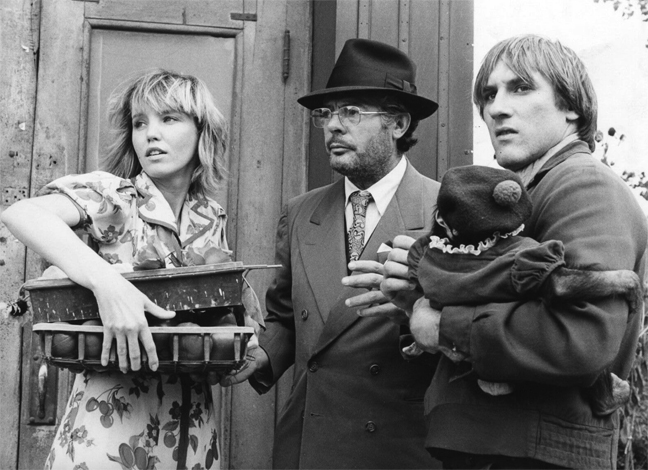
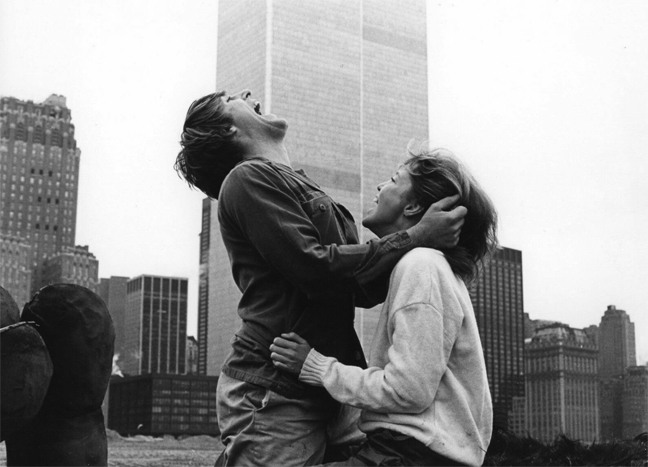
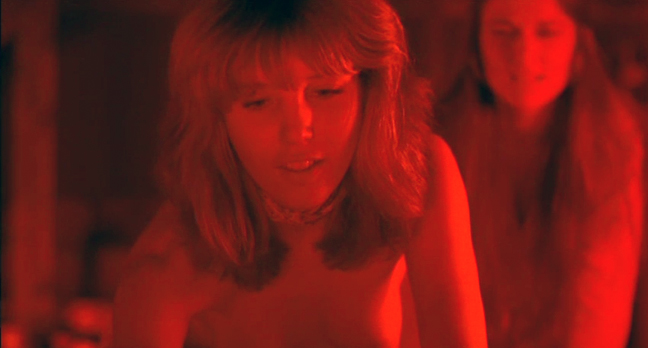

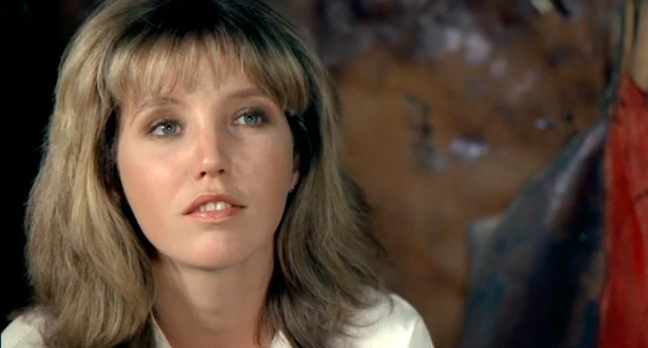
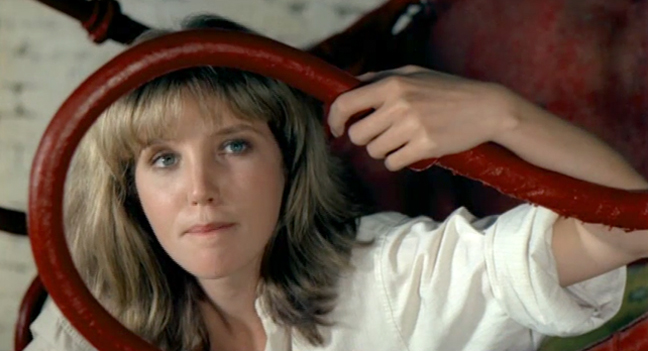
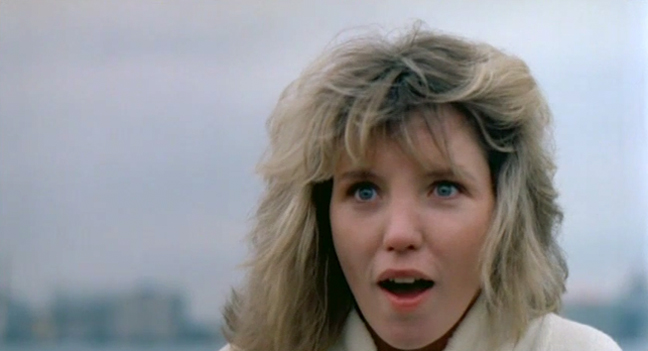
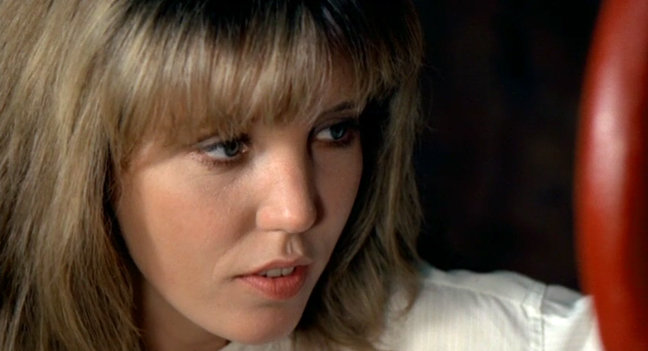
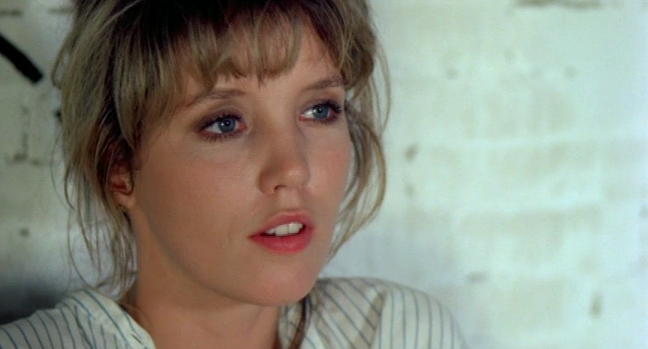
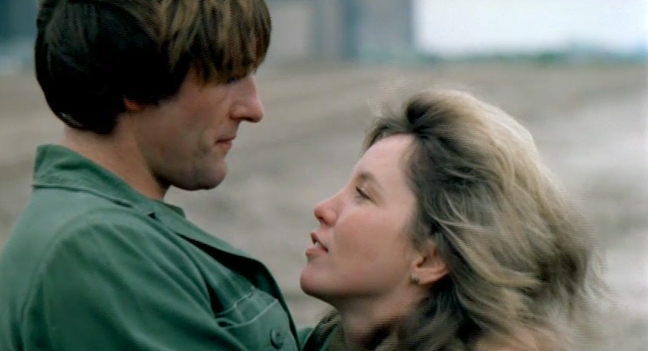
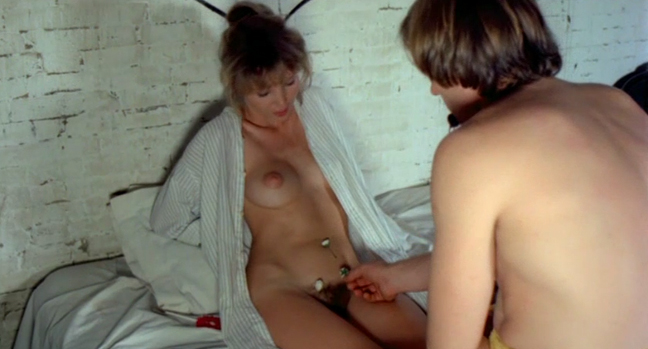
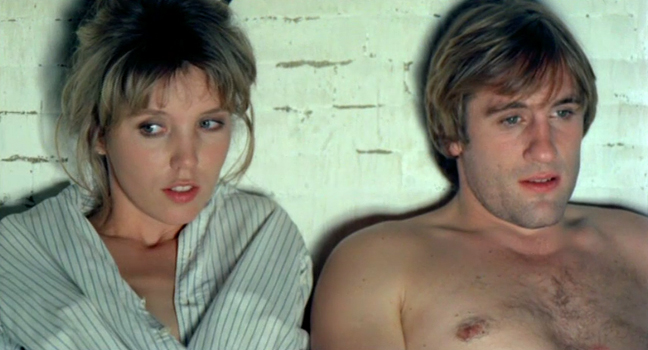
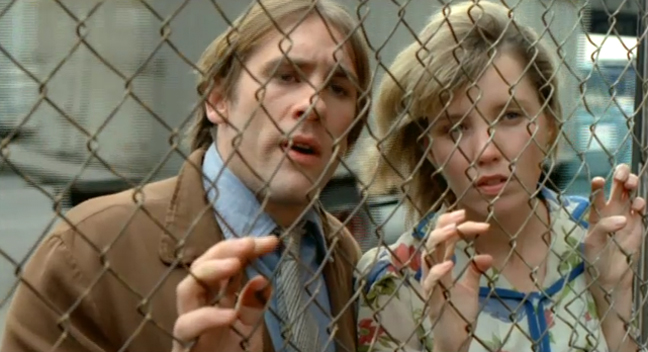
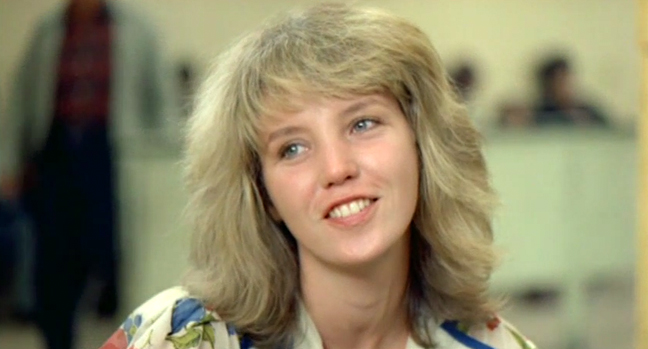
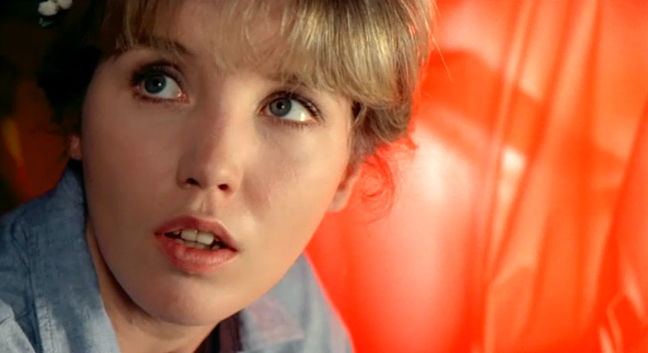
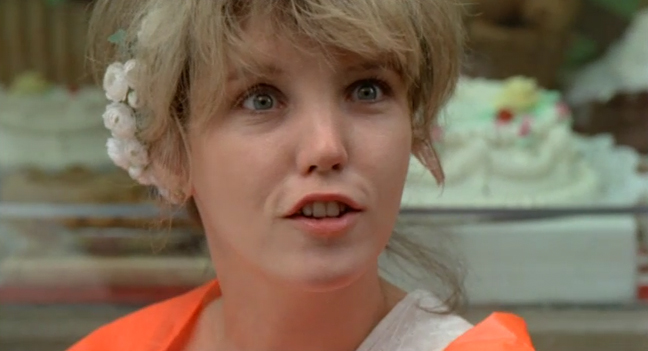
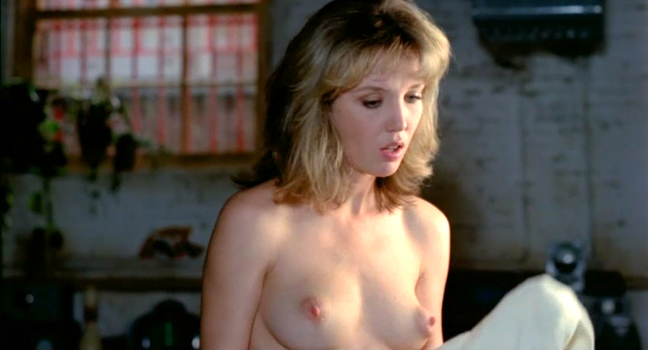
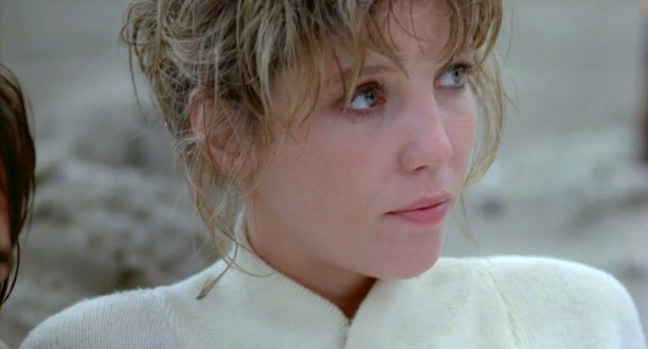
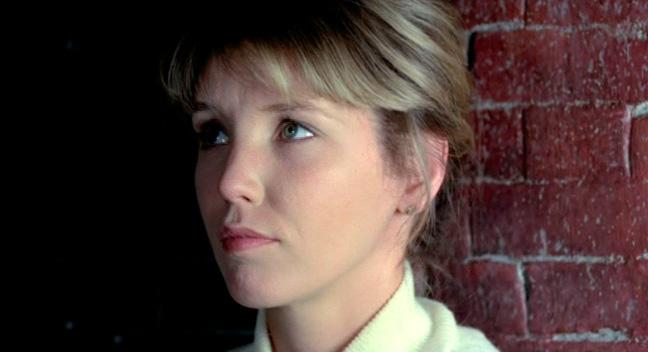
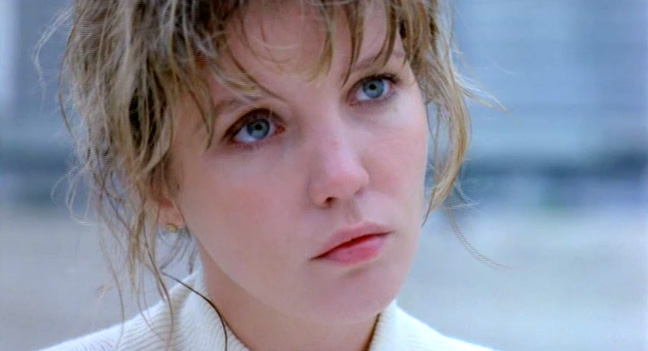
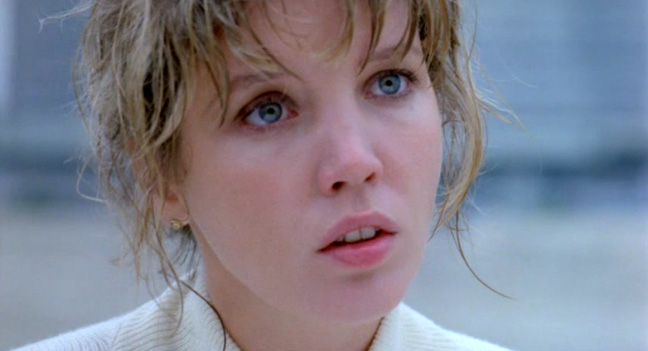
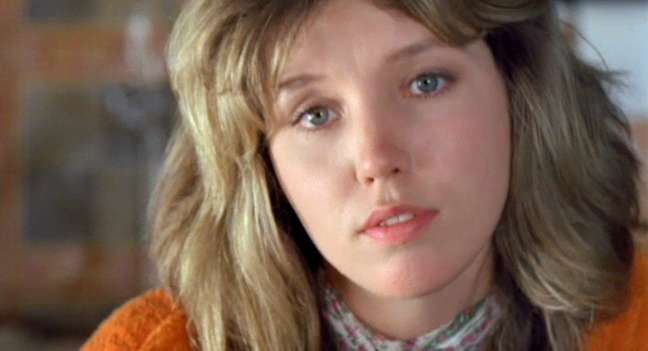
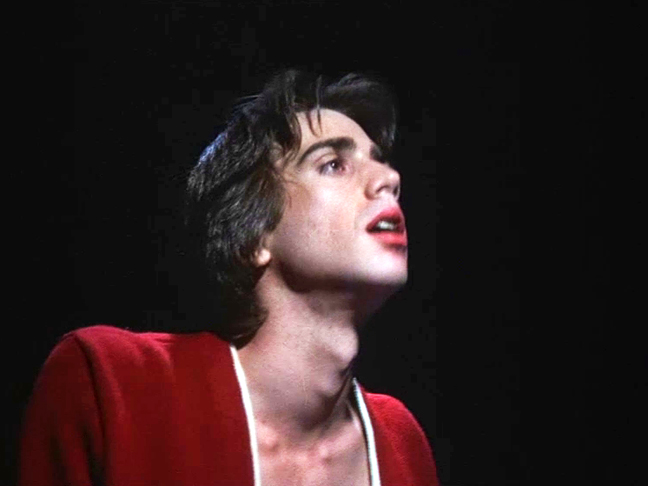
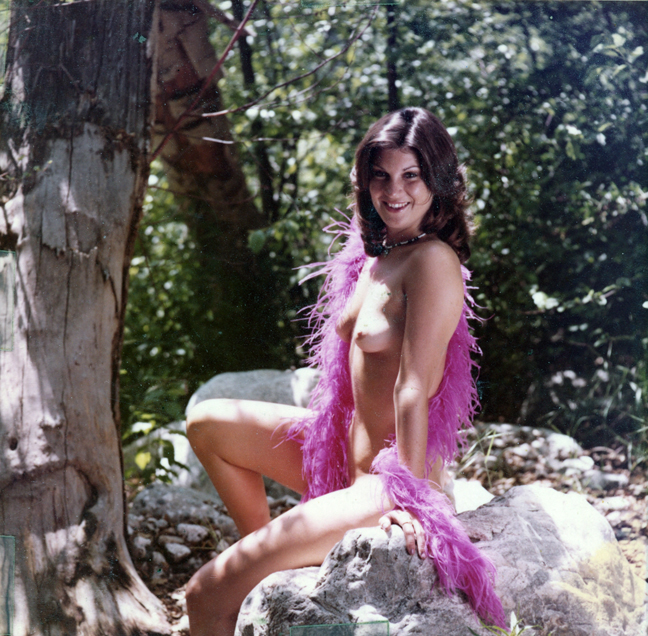
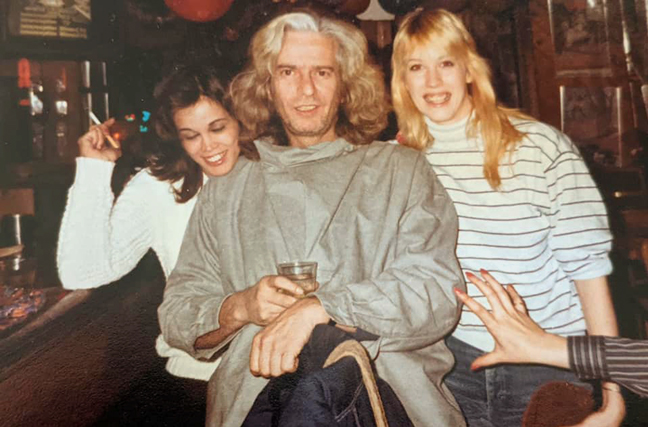

Oh man. This one hits hard. Abigail Clayton was the purest form of what I find beautiful about the film scene in the 1970s…….. she had an innocence, beauty, and sweetness that I associate with that time.
This is heartbreaking.
Another wonderful piece, thank you Ashley. I find “crossover” actors fascinating – there’s probably a very good book to be written on that whole subject.
Thank you Mike!
I always look forward to Sundays and the next Rialto Report, and click in the site with excitement, but my heart fell when I saw this post. What a kick in the ass this news is.
R.I.P. Abigail/Gail
Agree James – but appreciate you reading.
WOW. HEARTBREAKING. WHAT A LOSS. MY CONDOLENCES TO HER FAMILY.
Oh no. This is very saddening.
Awesome Article Keep Up Good Work
Thanks Jeff!
Fabulous, sir. Just fabulous. Caring. Insightful. Respectful. Thank you so much.
Thank you Brumus!
For a “fleeting” conversation, it was a good one. Thanks for sharing and sorry to hear of her passing. Sad fact is that our golden age legends are as old as us (I’m 64) or older.
Thank you Jim!
Amazing! I was very touched by this. Richard Pacheco here. I was just starting out in San Francisco as she was closing down out here. I never met her, never shared a set with her, but I heard her name often in those early days . . . spoken reverently . . .and with considerable affection by some of porns’ “regulars” who lauded her. I’m talking about John Leslie and Joey Silvera and Ken Scudder and Sam Weston and John Seeman, who told me he had quite the crush on her.
And after reading this Rialto Report and finally getting to see some pictures of her, too, I certainly can understand that! If we’d have worked together, she sounds a whole lot like the kind of person that I would have had a crush on, too! In fact, I feel kind of lucky that we didn’t work together. I had enough trouble managing my marriage with all the crushes that I did have in the industry without throwing any more logs on the fire. She sounds like a very sane and bold person. That was one of my favorite flavors! Well, BRAVA to you “Abigail Clayton” . . . wherever you are . . . and thanks to you and Ashley for sharing some of your story with us! – Howie Gordon, aka the ghost of Richard Pacheco
Aw thanks as always Howie – we always appreciate it when you take time to leave a note. xo
Sad. What a beauty. I’m glad she opened up to you, even for a short time.
We are too JL.
I hope she did not pass from COVID. She was the star of the first adult movie I ever saw, Dixie. Glad to have read this article to flesh out the pretty woman I saw so long ago.
Thanks for reading Lad!
I worked with Gail at a corporate job in the late 90’s. I liked very much and always talked about art and politics and bring in the corporate world. I tried look her up just recently. Very sad news…thank you for the interview and essay.
Thanks so much for taking the time to share your memories Ray!
I enjoyed your conversation. She seemed honest. So many people kept in touch w Jamie over the years it seems. A deviant but also very endearing too, not a lot of people can walk that line. Thank you
Thank you Ken!
Though you never got a full interview, having these recollections from Gail/Abigail at least fills in some of the details of her life. With her beauty and intelligence, she had a unique presence in the films she was in. A Coming of Angels is probably the first one that comes to mind with her name. With the misogyny at the heart of that film, I can understand why she was not happy with it. But to have her, Annette, and Leslie Bovee in one film was nice.
It sounds like she passed away several years ago. I am curious about how you decide to publish interviews once someone dies. Do you ask permission from people close to them or, if there is nobody left to ask, do you wait a certain amount of time to publish?
I just learned that Randy West passed away this fall. I remember you posting some pictures with him, so hopefully a podcast or article is forthcoming.
Once again, thank you Rialto Report for another year of stories. Hard to believe that 2024 is almost over.
Thank you Jeff!
“It’s the unexpected passing of people that hits you the worst. You feel cheated.”..Isn’t that the truth. Fantastic story tonight. Through these pieces I’m getting a clearer idea of the early west coast beginnings.
We appreciate that Sonny.
So sorry to hear of her passing. A beautiful girl and a beautiful soul as well. I met he once when she did a publicity tour of “Seven into snowy” in NYC. It was at a Theatre in the upper eastside, She was sitting at a table in the lobby
I walked over and she had a big smile and said ” Hi how are you doing today”. We had a nice quick chat she autographed a glossy 8×10 picture of her for me (wish I still had it)I came away feeling what a nice person she was.
Thanks for sharing your memories Tonyrocc.
I should have not been cutting those onions while reading this. Sniff.
Terribly sad news. I felt like I grew up with Abigail/Gail despite knowing almost nothing about her. Though she sounds clearly reticent in this exchange, I feel that her character shines through… someone who is thoughtful, respectful, kind, and honest.
And that makes me even sadder she is gone.
Oh my. I suspect that I fall into the same category of the many who regularly visit this tremendous website, and that is I rarely leave a comment for fear of drawing attention to myself and my interest in…. well… adult films. We’re the silent majority, as it were. But this post is typical of the care and love that Rialto Report has for its subjects. This post literally took over a decade to come into being, and no one else but Rialto Report could have put together. So where would we be without it? How would we know the words and thoughts and actions of so many people in the business? The answer is simple: we wouldn’t. It would be lost forever. So, with a tear in my eye for the much-missed stunning Abigail Clayton, I salute the Rialto Report for giving this to the world… and for something that will last forever.
Great conversation. When I think of adult film in general and where it falls for most actors lives, this comment from her sums it up;
“It was a convenient way of making money, I was with friends, it was fun, occasionally exciting, good for my ego… all the usual reasons. I don’t want to create the impression that I was manipulated, or even aimless. Rather it was all something of its time.”
Thanks for treating people as people in your interviews.
Thank you so much John!
Thank you so very much for this Andria – really glad you left a note!
Above all else you can always count on Rialto Report to allow adult film personalities to tell their own story and to treat them with respect. This is a wonderful, very thorough interview with Abigail/Gail, and the informality only highlights your high standards, especially in how you discussed her romantic relationships.
Her era of porn and the ideals many who were in the industry at that time had feel more and more like a world that never was, but your work is a testament to how real those fleeting moments were. Rest in peace to Abigail and thanks for all you gave.
Thank you so much JL3!
Hit a home run here. Thank you
I love her.
This was such a great interview, thank you for sharing and for all that you do to help remember her and other originals in the industry.
Thank you Craig!
It felt like the key moment in the interview was when Gail said she was afraid you weren’t getting what you wanted out of it . . . I have a feeling that was when she accepted what any regular visitor to The Rialto Report knows, that you’re presenting non-exploitive stories of the stars of the industry to fans who remember them with affection and want to know them as people. As someone who had some training in art and film history, I also imagine that she knew she was now part of that history. Thanks for this wonderful interview and for perserving Gail as she was, now that she’s gone . . .
Thanks so much CV!
IFor years I have been unable to find anything of substance online about the beautiful Abigail Clayton. Thank you Rialto Report for yet another outstanding article.
We appreciate that Damien!
I know of her only from her scene in Maniac. I was a big wannabe horror film nerd as a kid. I wanted to see all of them at the movie rental joint but my parents wouldn’t let me. Maniac was one of those VHS tapes I would pick up and look at the back and dream of seeing one day.
It wasn’t until I was older that I started crossing these horror pictures off my bucket list. Blue Underground released a special edition Blu Ray so I picked it up. I enjoyed the movie and noticed Sharon Mitchell in it. I had seen her in a lesbian compilation video and was familiar with her in that context. I couldn’t wait to listen to the commentary with Lustig and Savini to learn how they made this picture.
The commentary was much more enjoyable than the film itself. By the time I started to watch these movies, I was too old to be scared or titillated by them. They were more about nostalgia and revisiting the love and magic of movies that I felt as a child.
Lustig spoke about Abigail’s scene and how she was also an adult film star. He had befriended a few people from that scene as he cut his teeth directing a few adult films and borrowed some actresses for Maniac. I always thought she was kind of a mystery. Not much was known about her and she never showed up on the few lesbian complications of which I had seen.
Now I know why. She seems like a real flower child. And that Scudder dude seemed like a shy fellow who had become obsessed with her memory and never really moved on. Interesting.
Moving and powerful interview. I remember seeing a Coming Of Angels and having 3 crushes, most powerfully regarding Abigail/Gail.
Thanks again for knocking it out of the park. Keep up the great work.
Thank you R!
IAFD is now stating that Abigail passed on 01 Dec 2021. They have also corrected her year-of-birth to 1948.
I do enjoyed reading your reports, podcasts and just what these actors in the industry thought of the work they did and the time they were in and how they got in or got out of the industry and how they moved on. Thanks for another great interview, how ever “fleeting”.
Thank you Fred!
Thank you for your work. Beautiful.
Abigail Clayton was my favorite back in the day. Always hope to see a piece on her here. Sad it came after her passing. Going take a moment to reminisce about Abigail in 7 into Snowy and an enthralled me in the audience. Thanks for this interview.
I had finished watching several of Abigail’s films and wondered what happened to Gail Lawrence. I took had a crush on her and this news saddens me. Thank you Ashley for the interview giving me insight to Gail’s life.
Reminds me of Susan Anton.
So thankful for having this interview to read and ponder. I grew up and went to high school a few short blocks from the adult theater in Concord Ca. that is the setting of her publicity appearance in the Oakland Tribune article posted in the interview.
It’s funny as I distinctly remember when the film “Health Spa” was on the marquee there and my high school friend snuck in to see that film!
Gail really was a lovely person. RIP.
It’s nice to finally know how that scene in Femmes de Sade with San Quinton guards letting Joey Silvera out of the actual prison gates was filmed. I would’ve loved to watch Alex de Renzy and his crew pull that off without getting caught!